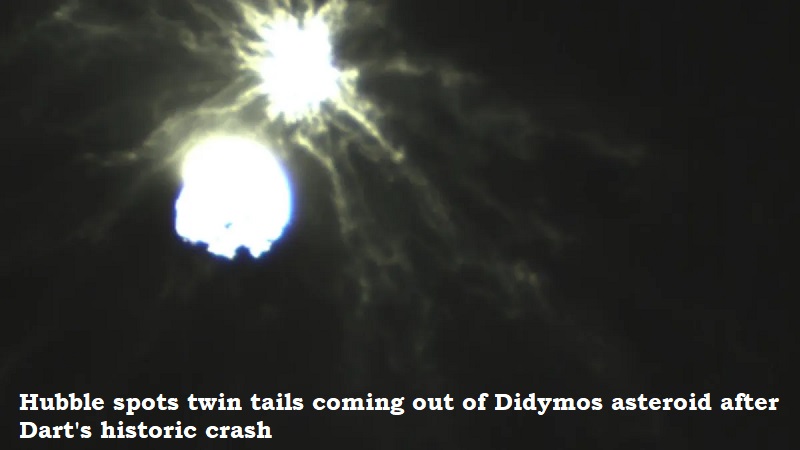
The Hubble space telescope discovered twin tails of material emerging from the Double Asteroid Redirection Test (DART) mission, which smashed into the Didymos-Dimorphos asteroid system over a month ago. The aftermath of the collision that successfully changed the asteroid’s motion in space is visible in new photographs taken by the telescope.
The orbit of Dimorphos around Didymos was originally 11 hours and 55 minutes long, but DART shortened it by around 32 minutes, according to analysis of crash data. The successful collision provided engineers and scientists on Earth with a weapon to protect the planet from any future object on a collision course with Earth.
The Hubble telescope has been trained on the asteroid for several weeks observing the developments on the near-Earth object after the fatal crash of the asteroid, which made a life-long dent in space. The observatory has seen debris clouds evolve over time and the ejected material expand and fade in brightness as time went on after impact. This was largely as expected.
The unexpected creation of a double tail emanating from the system is novel, and it is similar to the evaporation of comets and meteors as they approach the Sun from outer space. The Hubble views, according to the European Space Agency, offer the double-highest-quality tail’s image to date.
18 observations of the system have been made by Hubble. Between October 2 and 8, 2022, the second tail formed. According to ESA, ‘the Investigation Team is currently seeking to determine the relationship between the comet-like tail and other ejecta features detected at various dates in photos from Hubble and other telescopes.’

Post Your Comments